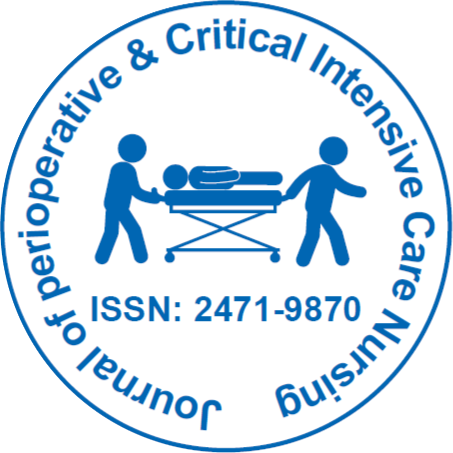
Journal of Perioperative & Critical Intensive Care Nursing
Open Access
ISSN: 2471-9870
+44-77-2385-9429

ISSN: 2471-9870
+44-77-2385-9429
Opinion - (2023)Volume 9, Issue 2
Mechanical ventilators are sophisticated medical devices that have revolutionized the field of respiratory care. These lifesustaining machines provide critical support to individuals with compromised breathing, helping them overcome respiratory failure and enabling the body to receive the oxygen it needs. Mechanical ventilators are used in a variety of settings, including hospitals, intensive care units, and emergency rooms, and have proven to be indispensable in managing conditions such as Acute Respiratory Distress Syndrome (ARDS), Chronic Obstructive Pulmonary Disease (COPD), and respiratory failure. Fundamental principles of mechanical ventilators, their components, modes of operation, and their critical role in saving lives are discussed in this study.
Principles of mechanical ventilation
Mechanical ventilation is a therapeutic intervention that involves the use of a mechanical ventilator to assist or replace spontaneous breathing. The fundamental principles of mechanical ventilation revolve around two primary objectives: to ensure adequate oxygenation and to facilitate effective removal of carbon dioxide from the lungs. Achieving these goals requires precise control of several variables, including tidal volume (the volume of air delivered with each breath), respiratory rate, inspiratory flow, Positive End-Expiratory Pressure (PEEP), and the inspiratory-to-expiratory ratio.
Components of mechanical ventilators
Mechanical ventilators consist of various components that work together to deliver breaths to the patient. These include a gas source, a control system, a breathing circuit, and a patient interface. The gas source typically consists of compressed air and oxygen supplies, which are mixed to deliver the desired oxygen concentration. The control system manages the ventilator's settings and parameters, allowing customization based on the patient's needs. The breathing circuit delivers the gas mixture from the ventilator to the patient's airways, while the patient interface can vary from invasive (endotracheal tube or tracheostomy tube) to non-invasive (face mask or nasal prongs), depending on the clinical scenario.
Modes of mechanical ventilation
Mechanical ventilators offer various modes of ventilation to meet individual patient requirements. Common modes include assistcontrol ventilation, pressure support ventilation, synchronized intermittent mandatory ventilation, and continuous positive airway pressure. Assist-control ventilation delivers a pre-set tidal volume at a predetermined rate and allows the patient to trigger additional breaths. Pressure support ventilation assists the patient's spontaneous breaths by providing a constant positive pressure during inspiration. Synchronized intermittent mandatory ventilation combines mandatory breaths with synchronized support for spontaneous breathing efforts. Continuous positive airway pressure provides a constant positive pressure throughout the respiratory cycle, promoting lung recruitment and oxygenation.
Advanced features and safety considerations
Modern mechanical ventilators come equipped with advanced features to enhance patient care and safety. These include alarms to alert healthcare providers of potential issues, integrated monitoring systems for assessing lung mechanics and gas exchange, and software algorithms for optimizing ventilation settings. Ventilator-Associated Lung Injury (VALI) is a potential complication of mechanical ventilation, and strategies such as lung-protective ventilation and the use of low tidal volumes can help mitigate this risk. Additionally, healthcare providers must be vigilant in preventing Ventilator-Associated Pneumonia (VAP) by following strict infection control measures and maintaining aseptic techniques during airway management.
Mechanical ventilators are indispensable devices in respiratory care, playing a vital role in supporting patients with compromised breathing. They ensure adequate oxygenation and assist in the removal of carbon dioxide from the lungs. With their complex components and various modes of operation, mechanical ventilators allow healthcare providers to customize treatment based on individual patient needs. The continuous advancement of technology and ongoing research efforts contribute to the refinement of ventilation strategies, improved patient outcomes, and the exploration of alternative approaches to respiratory support. Mechanical ventilators have undoubtedly transformed the field of healthcare, saving countless lives and offering hope to patients facing respiratory failure.
Citation: Ruth G (2023) The Future of Mechanical Ventilators: Technological Advancements and Innovations. J Perioper Crit Intensive Care Nurs. 9:225
Received: 22-May-2023, Manuscript No. JPCIC-23-24928; Editor assigned: 25-May-2023, Pre QC No. JPCIC-23-24928 (PQ); Reviewed: 09-Jun-2023, QC No. JPCIC-23-24928; Revised: 16-Jun-2023, Manuscript No. JPCIC-23-24928 (R); Published: 23-Jun-2023 , DOI: 10.35248/2471-9870.23.9.225
Copyright: © 2023 Ruth G. This is an open-access article distributed under the terms of the Creative Commons Attribution License, which permits unrestricted use, distribution, and reproduction in any medium, provided the original author and source are credited.